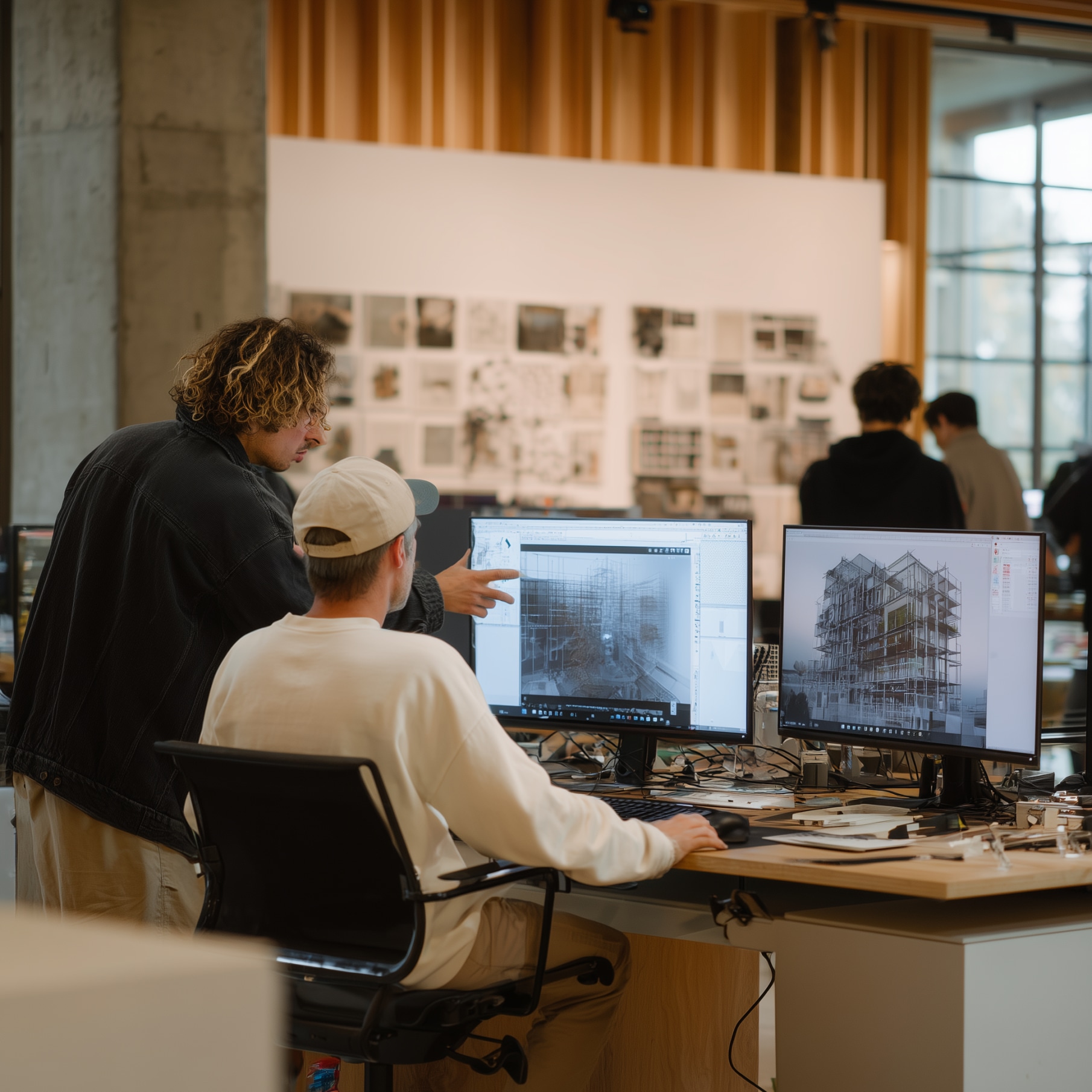
Rethinking Design Education:
Why AI Belongs in the Architecture Curriculum
Observations and Conversations on AI in Architecture
Architectural education is in a moment of transition. While the profession begins to integrate AI into real workflows, many schools are still unsure how or whether to bring these tools into the curriculum. The hesitation is understandable. These are early days, and the stakes feel high.
Over the past year, I've been working at the intersection of practice, teaching, and technology. I'm a licensed architect, a professor at Tulane, and someone who has been building software that uses AI to support early-stage design research. I've had the chance to teach with these tools, speak about them at national conferences, and listen closely to both educators and practitioners navigating similar questions.
That experience hasn't given me all the answers. But it has given me perspective. I've come to believe that AI, when used with care, can strengthen architectural education. It can deepen research, support iteration, and help students navigate complexity. Not by replacing judgment, but by helping them reach it more clearly.
What We're Talking About in Academia
At the 2025 National Conference on the Beginning Design Student (NCBDS), I gave a talk on AI and early design pedagogy. My focus was on AI as a tool that mirrors how architects already work, through context, iteration, and refinement. It is not a black box. It is more like a framework for exploration, especially when used to support rather than shortcut the design process.
The conversations that followed were thoughtful and honest. Faculty expressed real interest in these tools, but also concern. What happens to authorship when AI is involved? How do we ensure students aren't simply outsourcing critical decisions? Where does this fit in relation to hand drawing, precedent analysis, and fundamental spatial reasoning?
One of the metaphors we discussed was the calculator. Students still learn to add and subtract by hand, not because they'll never use a calculator, but because fluency with the basics helps them wield it well. The same holds true for AI. When students understand how to think architecturally, they can use these tools to go further, not just faster.
What the Profession is Asking of Schools
At the 2025 AIA Conference in Boston, I spoke with architects, educators, and school leaders about how AI fits into education. I heard from faculty at institutions like MIT and BAC, as well as people involved with NAAB accreditation. Nearly everyone was asking a version of the same question: where does this go in the curriculum?
In conversations about accreditation, we looked at how NAAB evaluates student exposure to topics like building code and accessibility. These topics are often taught in isolation through technical electives or seminar courses. But that separation doesn't reflect how design actually works.
There's an opportunity to fold that knowledge into studio. For example, tools like the one we've been building at Atria can help students engage with zoning and ADA requirements directly, using real sites and programs. This doesn't mean turning studio into a compliance exercise. It means helping students see regulations as part of the design landscape rather than an afterthought.
By integrating research into the iterative process, students begin to understand that good design often emerges from constraints. And that is exactly the kind of thinking NAAB wants programs to support.
What Happened in the Studio
This past summer, I taught a two-week architecture course focused on the role of AI in design thinking. The students came in with little to no experience in architecture or AI. Over the span of ten days, they were able to use AI to conduct research, develop concepts, and produce visual representations of their ideas.
We started with foundational skills, including site analysis, cultural and material context, and regulatory research. AI supported those investigations by helping students access information quickly, compare sources, and synthesize what they were learning. That foundation gave them a way into conceptual development, where they used AI to test ideas and push their thinking further.
When it came time to visualize their concepts, we experimented with AI-generated imagery. These tools sparked interesting directions early on, but students quickly returned to sketching when they needed control and precision. They used AI again later in the process, adding entourage, refining atmosphere, and creating short animations to bring their work to life.
What stood out to me was how naturally students moved between analog and digital modes. AI did not replace their instincts. It gave them more ways to explore. The rhythm of architectural thinking — research, synthesis, iteration, and representation —remained intact.
What We Risk by Waiting
When schools delay engagement with AI, they leave students to figure it out alone. That does not prevent misuse. It just ensures that tools are used without reflection or structure. Worse, it reinforces the idea that design and technology belong in separate silos.
By bringing AI into the curriculum in a thoughtful, grounded way, we can help students use it as part of their design process rather than in place of it. We can model a way of working that is rigorous, curious, and connected to real-world constraints.
Closing Thoughts
AI is not a shortcut for learning how to think like an architect. But it is a tool that can help us think more broadly, ask better questions, and respond to complexity with greater clarity.
If we want students to graduate ready for real-world practice, we need to teach them how to design with research and rigor from the beginning. That means connecting studio to context. That means teaching tools in relation to architectural values. And that is where AI belongs.
We don't need to wait for a perfect framework. We just need to begin.
Better tools for a better built world
Join us at Atria in shaping the future of architecture and
engineering with AI-powered tools that enhance creativity, efficiency, and precision.